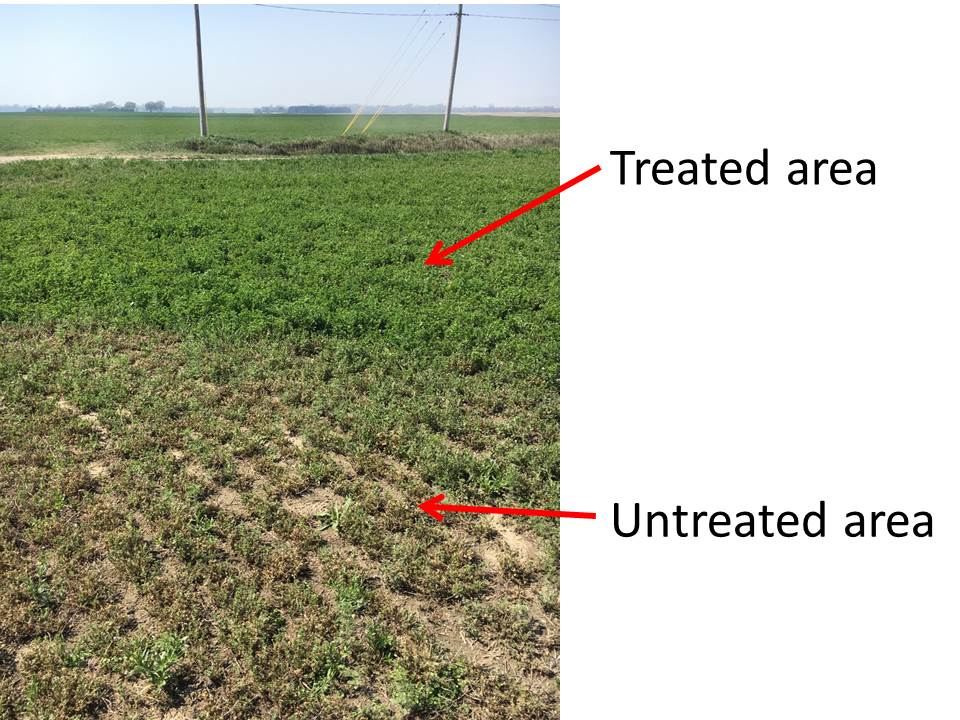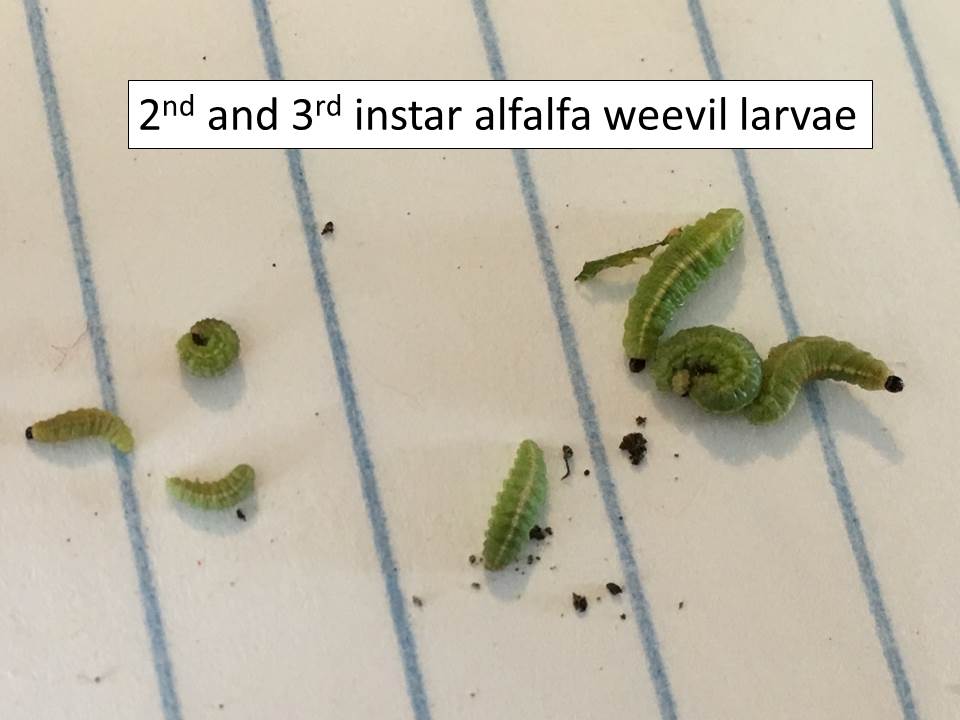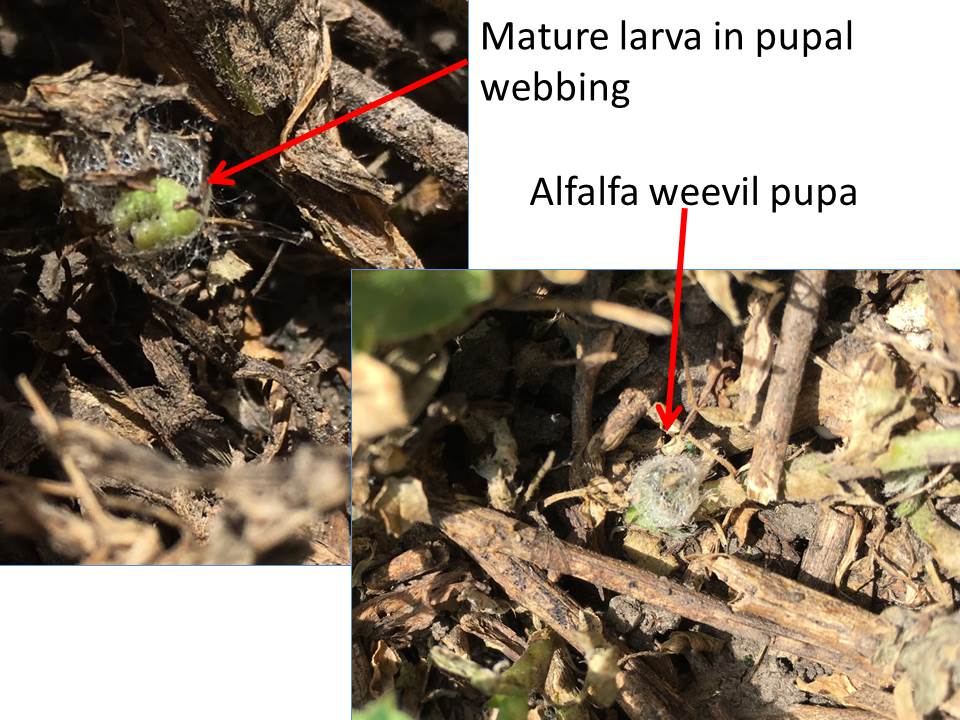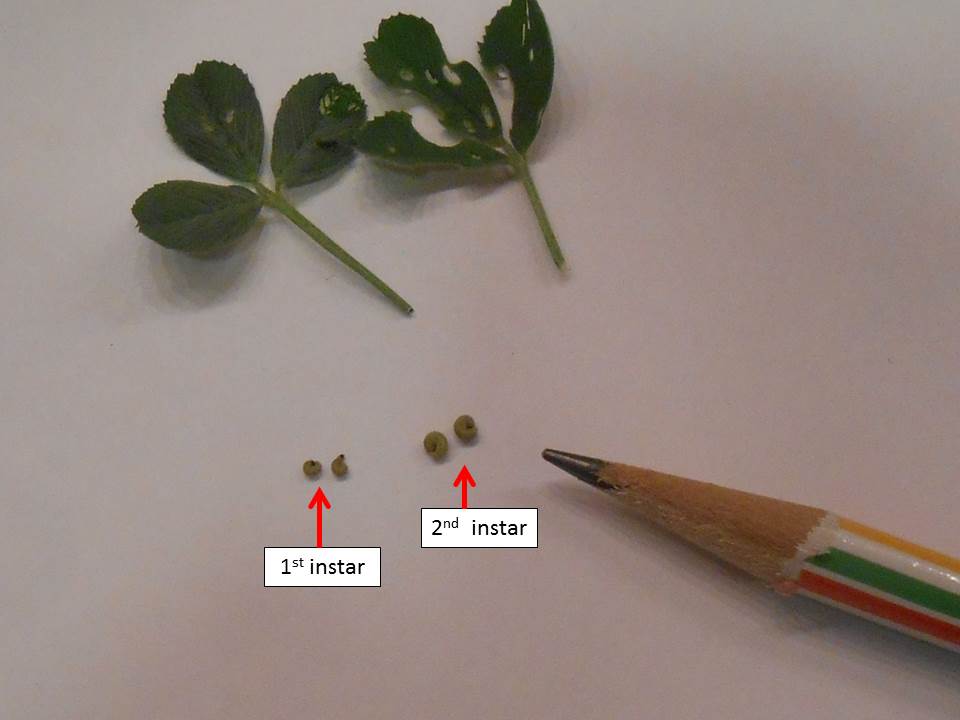–by Dr. Jeff Whitworth and Dr. Holly Schwarting
Alfalfa weevil populations in north central Kansas seem to be developing as expected. Fields sampled this week that had not yet been treated had greatly reduced foliage and were showing obvious signs of significant larval feeding, especially compared to fields that had been treated.
The good news is that the treated fields seem to be doing well and the untreated fields will probably only continue to be seriously impacted for about another week. Weevil populations are predominately pupae, pre-pupae, or mature larvae which should cease feeding in the next few days.
This should give the alfalfa a chance to recover. However, in untreated fields, and even fields that were treated later, after a majority of the larvae pupated, may have some adult feeding, as they may remain in fields until the 1st cutting or until temperatures start getting into the higher 80’s °F. Adults feed a little on foliage and/or may cause ‘barking’ on stems, but this usually doesn’t stress plants too much unless there are significant numbers of adults.
Very few aphids were detected, but there were a few so periodical sampling should continue to ensure that these aphid populations remain at insignificant levels.




